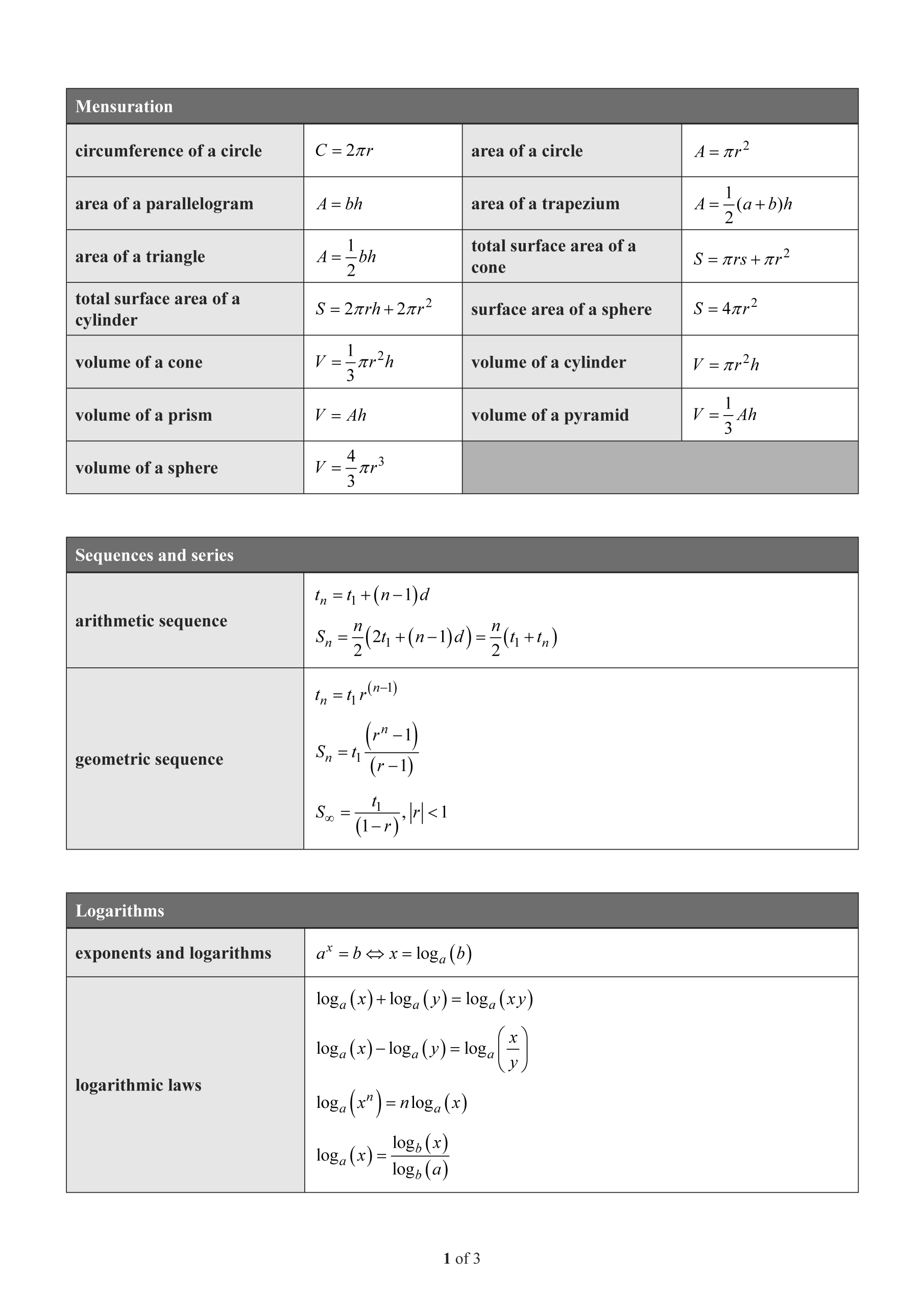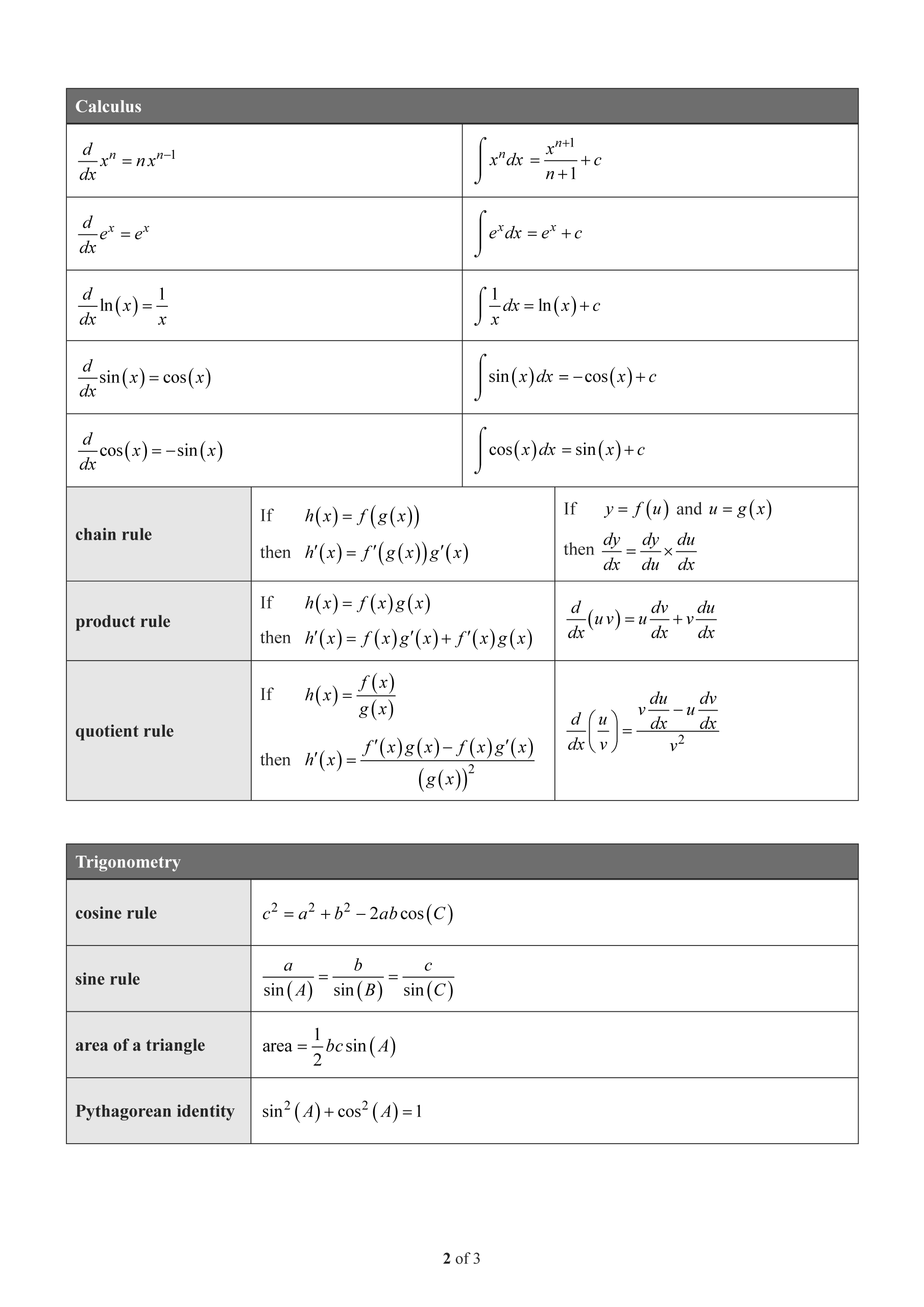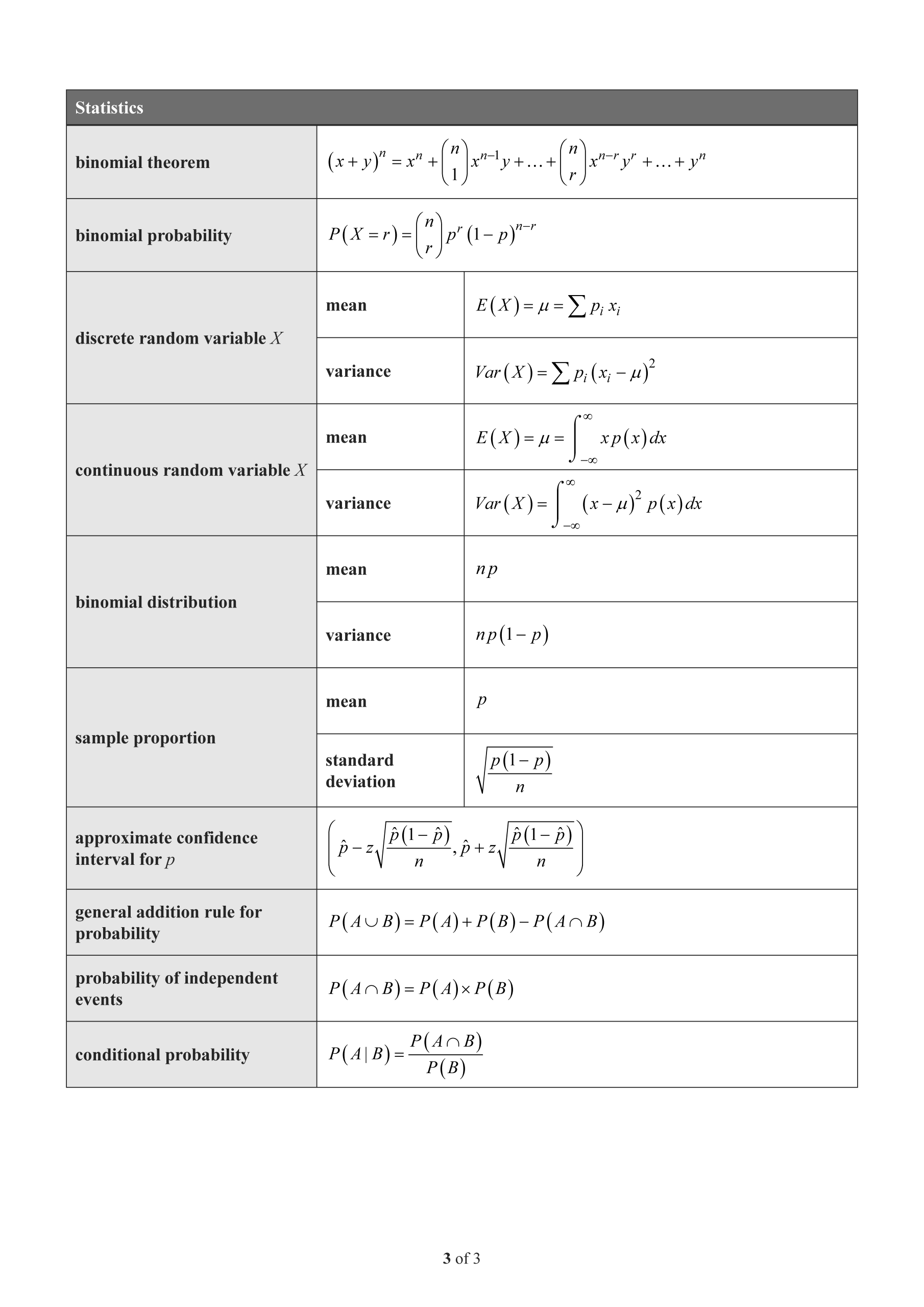QCAA Maths Methods Differential Calculus Mini Test 5
External Assessment Paper 1 — Technology-free
Number of marks: 12
Perusal time: 1 minute
Writing time: 18 minutes
Section 1
Instructions
• This section has 10 questions and is worth 10 marks.
• Use a 2B pencil to fill in the A, B, C or D answer bubble completely.
• Choose the best answer for Questions 1 10.
• If you change your mind or make a mistake, use an eraser to remove your response and fill in the new answer bubble completely.
Consider the graph of \(f'(x)\) for \(a \le x \le b\).
![Graph of the derivative function f'(x) on the interval [a, b]. The graph is a parabola opening upwards, with x-intercepts at some negative value and at x=0. The interval shown is from a (a negative value) to b (a positive value).](https://mathsmethods.com.au/wp-content/uploads/2025/07/2022-Paper-1-Q1.png)
Which statement describes all the local maxima and minima of the graph of \(f(x)\) over \(a \le x \le b\)?
- (A) one local minimum and one local maximum
- (B) one local minimum and two local maxima
- (C) one local minimum only
- (D) one local maximum only
Section 2
Instructions
• Write using black or blue pen.
• Questions worth more than one mark require mathematical reasoning and/or working to be shown to support answers.
• If you need more space for a response, use the additional pages at the back of this book.
– On the additional pages, write the question number you are responding to.
– Cancel any incorrect response by ruling a single diagonal line through your work.
– Write the page number of your alternative/additional response, i.e. See page …
– If you do not do this, your original response will be marked.
• This section has nine questions and is worth 45 marks.
The derivative of a function is given by \(f'(x) = e^x(x-4)\).
Determine the interval on which the graph of \(f(x)\) is both decreasing and concave up.
The population of rabbits (\(P\)) on an island, in hundreds, is given by \(P(t) = t^2 \ln(3t) + 6\), \(t > 0\), where \(t\) is time in years.
Determine the intervals of time when the population is increasing and the intervals when it is decreasing.
END OF PAPER


